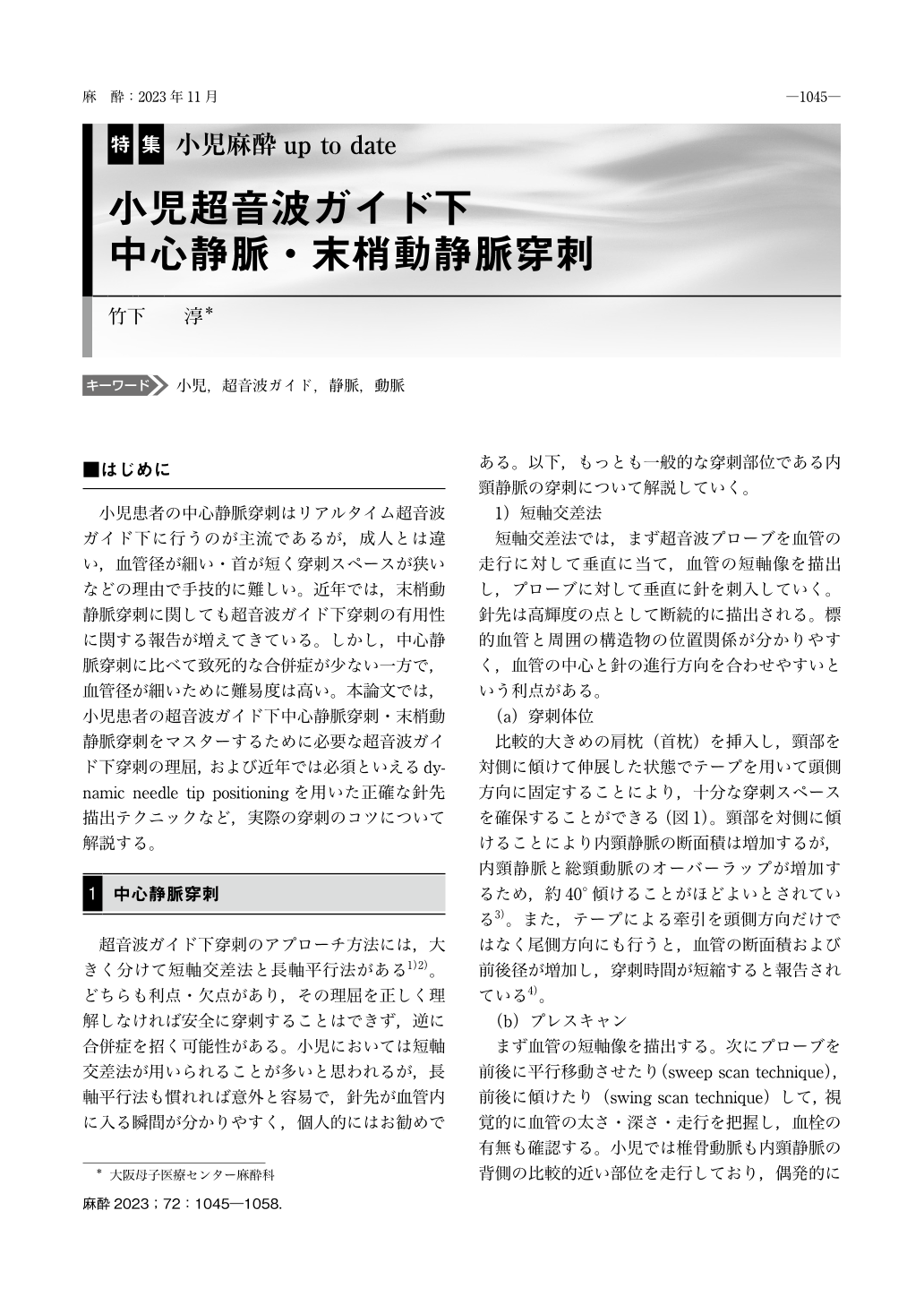Japanese
English
- 有料閲覧
- Abstract 文献概要
- 1ページ目 Look Inside
- 参考文献 Reference
はじめに
小児患者の中心静脈穿刺はリアルタイム超音波ガイド下に行うのが主流であるが,成人とは違い,血管径が細い・首が短く穿刺スペースが狭いなどの理由で手技的に難しい。近年では,末梢動静脈穿刺に関しても超音波ガイド下穿刺の有用性に関する報告が増えてきている。しかし,中心静脈穿刺に比べて致死的な合併症が少ない一方で,血管径が細いために難易度は高い。本論文では,小児患者の超音波ガイド下中心静脈穿刺・末梢動静脈穿刺をマスターするために必要な超音波ガイド下穿刺の理屈,および近年では必須といえるdynamic needle tip positioningを用いた正確な針先描出テクニックなど,実際の穿刺のコツについて解説する。
Central venous catheterization is usually performed under real-time ultrasound guidance in children, but unlike in adults, it is technically difficult due to the small vessel diameter, short neck, and narrow puncture space. In recent years, reports on the usefulness of ultrasound-guided peripheral arterial as well as venous catheterization have increased. However, while there are fewer fatal complications than with central venous catheterizations, the peripheral arterial and venous catheterization are more difficult due to the smaller diameter of the vessel. To master ultrasound-guided central venous catheterization and peripheral arterial and venous catheterization in children, in this article, we explain the theory of ultrasound-guided puncture along with the tips for actual puncture. These include the accurate needle tip visualization technique using dynamic needle tip positioning that has recently become indispensable.

Copyright © 2023 KOKUSEIDO CO., LTD. All Rights Reserved.


